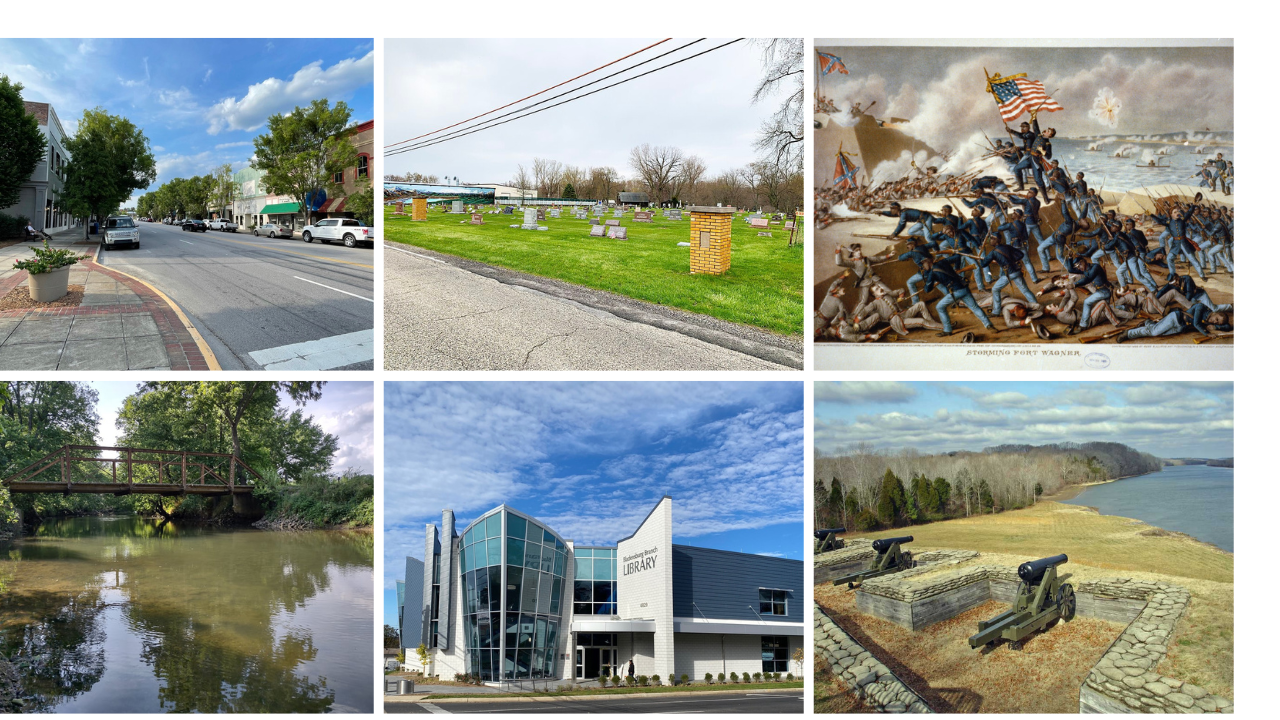American battlefields usually remembered in classrooms tend to be the same familiar names, repeated until they feel more legend than place. Off the main highways and far from big visitor centers, other fields once mattered just as much. On these quieter acres, alliances broke, experiments in leadership failed, and new identities took shape. Some saw victory, others collapse, all carried heavy costs. Remembering them restores scale, showing how national turning points began on ground that now looks ordinary and easily ignored.
Camden, South Carolina

North of Camden in South Carolina, a quiet grid of sandy trails cuts through pine woods where a Patriot army once came apart. In August 1780, British regulars smashed militia lines and sent soldiers running into the dark, turning a hopeful southern campaign into a sobering rout. The ground feels open and still now, yet markers and shallow rises sketch out where plans failed, pride cracked, and the fight for independence nearly lost its footing in a single hot morning.
Tippecanoe, Indiana

Near the town of Battle Ground in Indiana, a low ridge and thin tree line once framed a camp that felt confident behind its fires. Before dawn in November 1811, warriors tied to Tecumseh’s movement struck the tents, and the clash broke the momentum of a Native confederacy that challenged expansion into the Old Northwest. Today a paved path loops the field, where traffic noise mixes with the memory of a night that shifted power along the frontier.
Horseshoe Bend, Alabama

Along a sharp curve of the Tallapoosa River in Alabama, a crescent of earthworks once sheltered Creek Red Stick warriors making their last stand. On a March day in 1814, Andrew Jackson’s mixed force crossed the water, stormed the barricades, and cut down hundreds, ending the Creek War and opening millions of acres in the Southeast to new settlements. The park now feels hushed, yet every bend and bank carries traces of a world reordered at terrible human cost.
Bladensburg, Maryland

Just outside modern Washington in Maryland, a tangle of roads, riverbank, and parkland hides the site of a sprinting defeat. In August 1814, American defenses collapsed under British fire at Bladensburg, leaving the capital exposed and leading to the burning of public buildings that shocked the young nation. Now modest signs and a stretch of lawn stand where lines once wavered, quietly asking how an army so close to home soil could come apart in a single afternoon.
Palo Alto, Texas

On flat coastal prairie near Brownsville in Texas, tall grass once hid moving lines of men and artillery at Palo Alto. On May 8, 1846, Zachary Taylor’s outnumbered army used flexible cannon teams to blunt repeated Mexican attacks, opening the Mexican American War with a victory that shifted control of the Rio Grande border. The landscape reads as open pasture now, yet faint swales and broad horizons hint at how quickly a boundary dispute became a continental turning point.
Wilsons Creek, Missouri

Southwest of Springfield in Missouri, Wilsons Creek winds through oak covered hills that once echoed with the confusion of early Civil War combat. On August 10, 1861, Union general Nathaniel Lyon died leading attacks against a larger Confederate and Missouri State Guard force, leaving control of much of the state in doubt. Today fenced fields and farm traces sit in the sun, hinting at neighbors pushed into opposing uniforms while the country still argued over what the conflict would become.
Pea Ridge, Arkansas

In the hills of northwestern Arkansas, the ridges and open farms of Pea Ridge hold one of the best preserved Civil War battlefields, even if the name stays low in most survey texts. In March 1862, Union troops under Samuel Curtis held their ground against a larger Confederate force, keeping Missouri in Federal hands and stabilizing the Trans Mississippi theater. Quiet roads and rail fences now outline positions where artillery, local guides, and late winter weather decided a borderland’s future.
Fort Donelson, Tennessee

Above a bend in the Cumberland River in Tennessee, earthworks and cannon lines at Fort Donelson still watch over water that once carried gunboats through winter mist. In February 1862, Ulysses Grant tightened a siege here until Confederate leaders surrendered thousands of men, cracking open Tennessee and giving the Union a crucial river route into the Deep South. Today forest, bluffs, and a small cemetery share the site, holding a quiet record of how persistence reshaped the Western theater.
Fort Wagner, South Carolina

Off the coast of South Carolina near Charleston, waves roll past the remains of Fort Wagner on Morris Island, a site steadily claimed by tide and sand. On July 18, 1863, the 54th Massachusetts, one of the first Black regiments in Union service, led a night assault up the narrow beach and suffered heavy losses that stunned observers. Little of the fort is visible now, yet the story of that charge still shapes how the country remembers courage and service.


